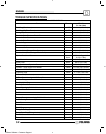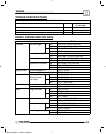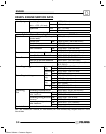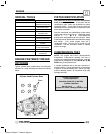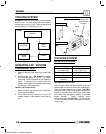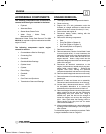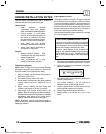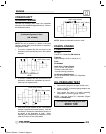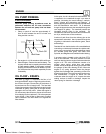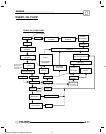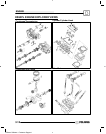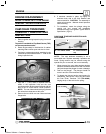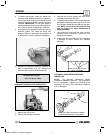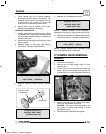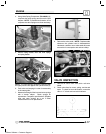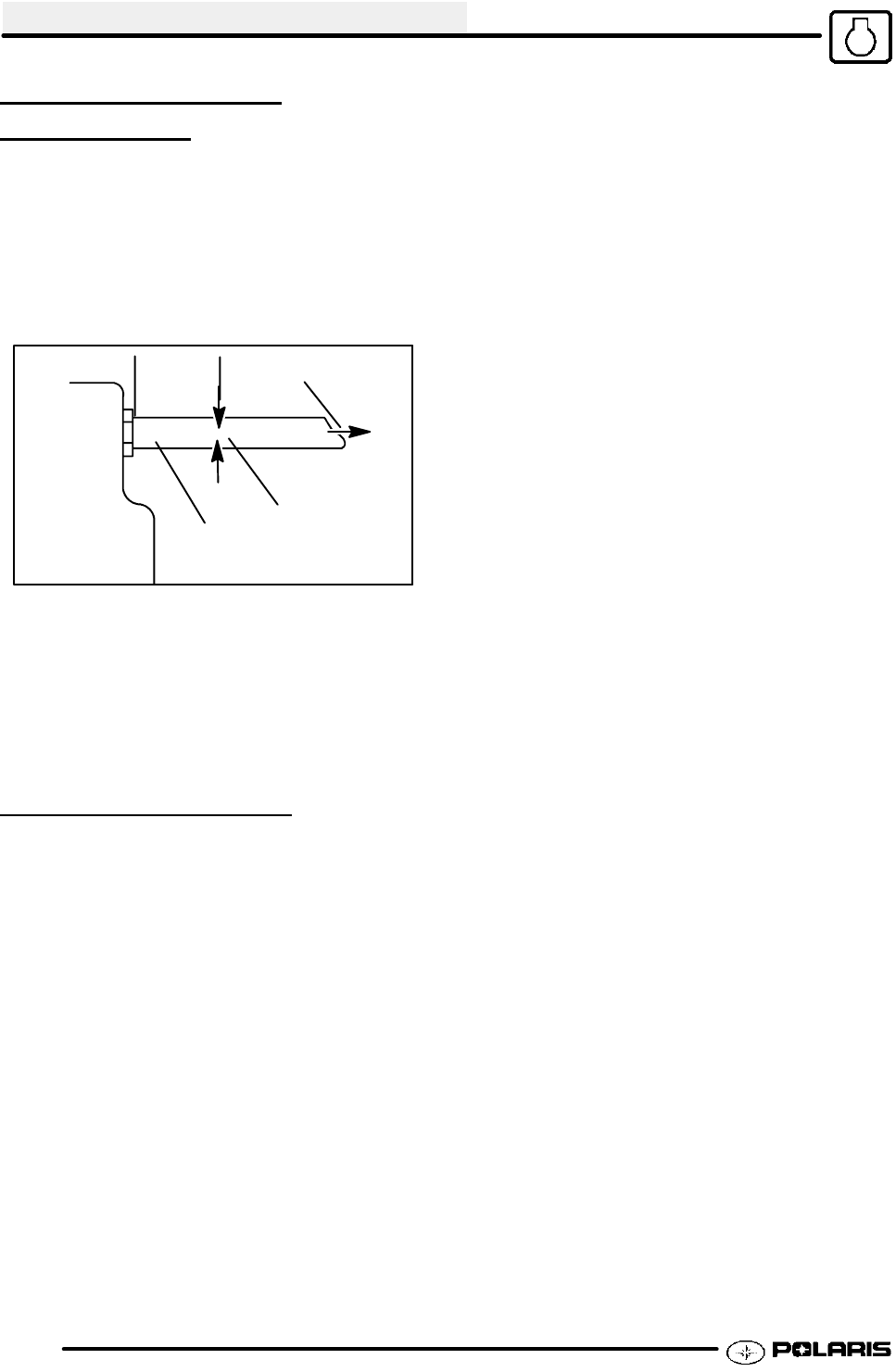
ENGINE
3.10
OIL PUMP PRIMING
PROCEDURE
NOTE:Oil pump priming procedures must be
performed whenever the oil hose connection
between the oil tank and pump inlet has been
disconnected.
1. Clamp or pinch off vent line approximately 2I
from oil tank, between the end of oil tank vent
fitting and the vent line.
Oil Tank
Vent Hose
To Ai r Bo x
Pinch Off
2I
Approx.
2. Run engine for 15--20 seconds at 3000--4000 rpm.
3. Shut off engine. Remove the vent line clamp. The
oil pump should now be properly primed and ready
for field operation. Note: If the system is primed
properly you should hear some air release, if you do
not, the system has not primed. repeat the process
if necessary.
OIL FLOW -- ES50PL
The chart on Page 3.11 describes the flow of oil
through the ES50PL engine. Beginning at the oil tank,
the oil flows through a screen fitting in the bottom of
the tank and into the oil supply hose. The feed side
of the oil pump draws oil through the hose and into the
crankcase oil gallery, pulling the oil through another
passage to the one way valve. (When the engine is
off, the one way valve closes to prevent oil in the tank
from draining into the crankcase.) Oil is then pumped
to the oil filter. If the oil filter is obstructed, a bypass
valve contained in the filter allows oil to bypass the
filter element.
At this point, the oil is diverted in three directions. Oil
is supplied to the crankshaft through a pto side oil
passage, lubricating the crank bearings, crankpin,
piston, cylinder and connecting rod bearings. A
delivery pipe supplies oil to the top of the cylinder head
and the transmission main shaft. Oil is delivered
though the pipe and enters the camshaft through the
cam support oil gallery. The camshaft journals are
lubricated through holes in the camshaft. Oil
lubricates the cam chain sprockets and cam lobes via
an oil jet, which drains to the crankcase.
Another oil path flows from the delivery pipe to the
transmission main shaft. Here it passes through the
oil gallery to lubricate the transmission gears, clutch
and bearings.
Residual oil from the lubrication of the crankshaft and
connecting rod indirectly lubricates the cylinder wall,
piston, rings, connecting rod small end bearing, piston
pin, oil/water pump drive gears, cam chain, drive
sprocket, and Magneto end crankshaft main bearing.
A one-way valve is located on the right front (PTO)
side of the crankcase. This valve prevents oil in the
tank from draining into the engine crankcase when the
engine is off. The valve mechanism consists of a
plunger, return spring, guide plug, and sealing
washer. When the engine is running, oil pressure lifts
the plunger off the seat, allowing oil flow. When the
engine is off, spring pressure forces the plunger
against the oil passage seat, preventing oil flow from
the tank to the sump. The one-way valve requires very
little maintenance. If engine oil drains into the
crankcase when the engine is off, inspect the valve
sealing surface for debris or damage. Inspect the
return spring for distortion or damage.
Enfocus Software - Customer Support



